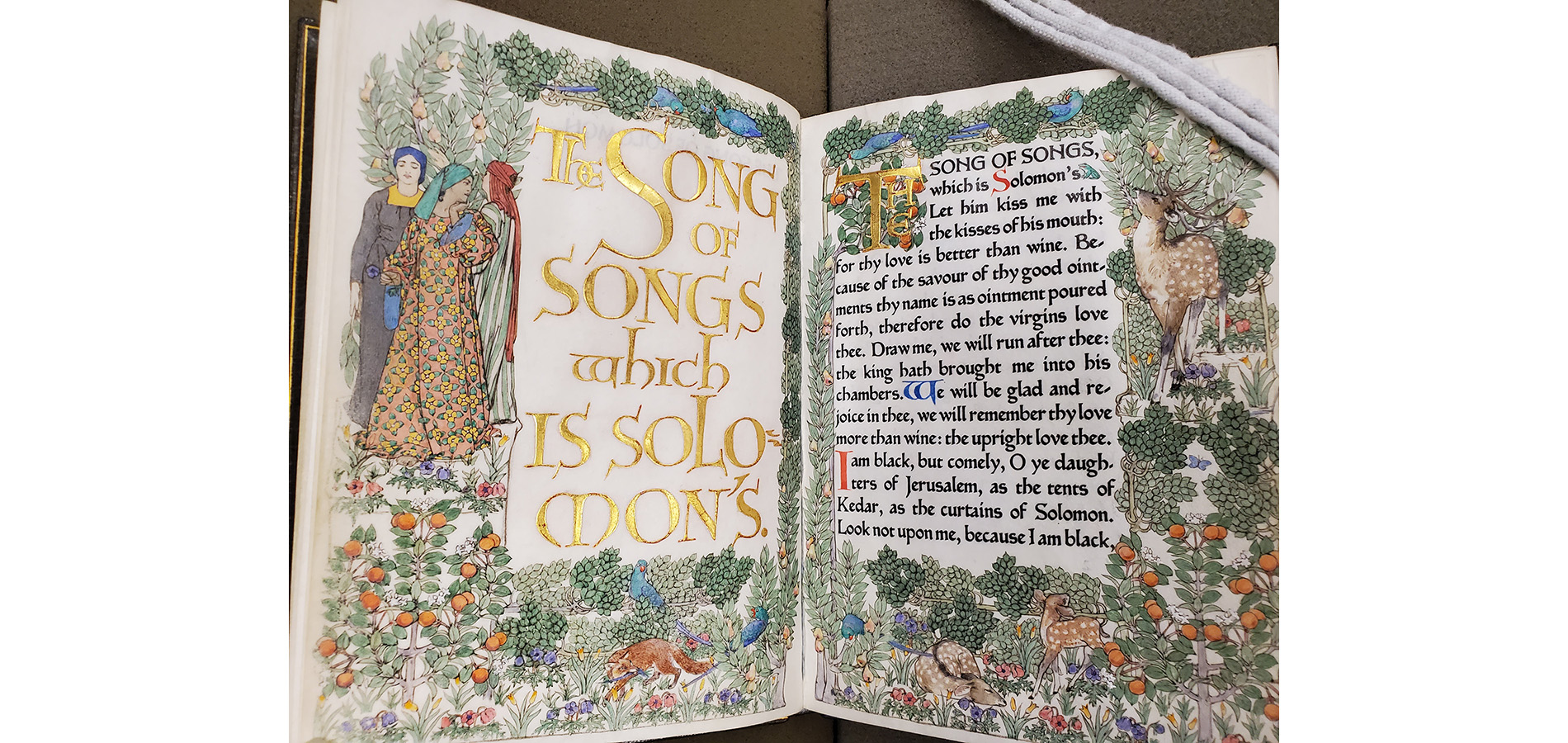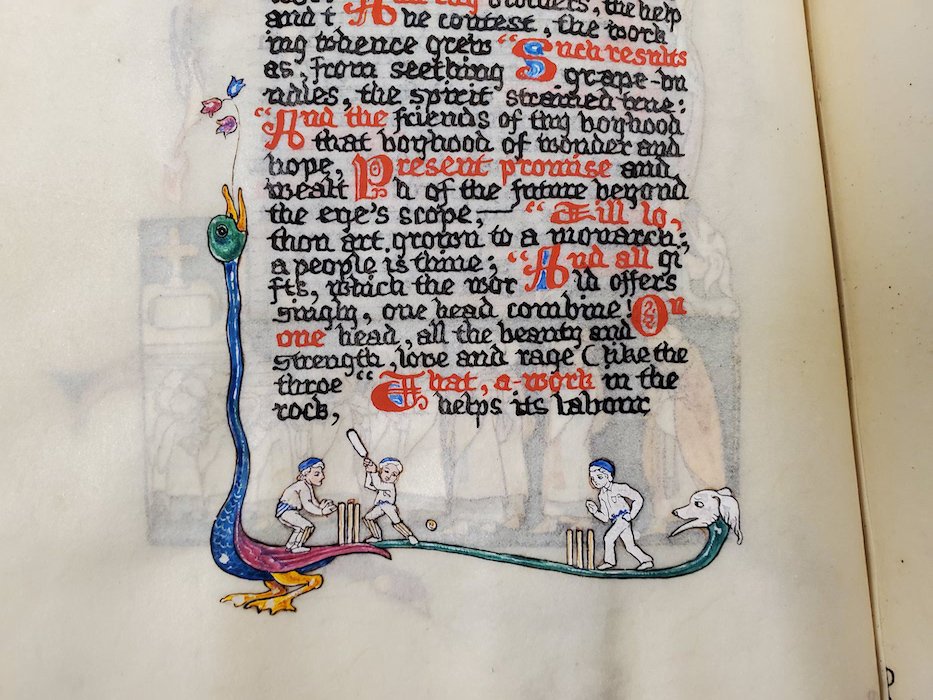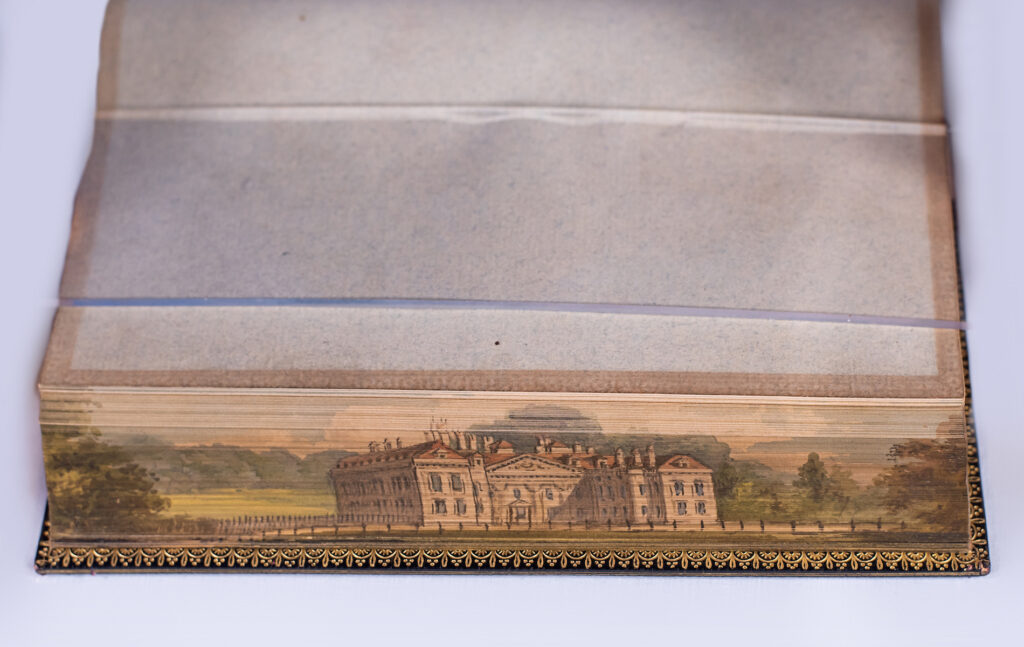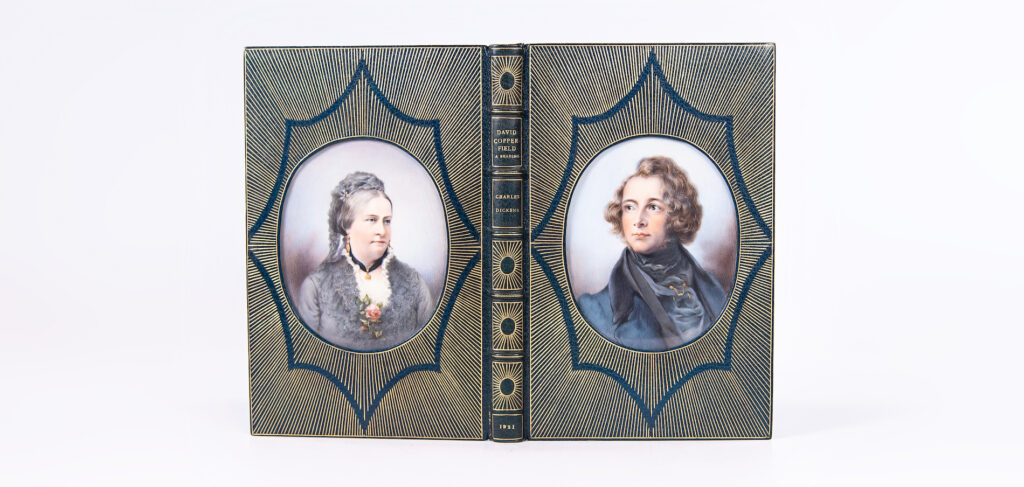
Women Who Painted Books
The Industrial Revolution created the mass production of books, out of which came the Arts and Crafts Movement and the desire to resist mass production by creating books as beautiful works of art. This brought about a focus on beautifully designed and printed books, such as those in Washington University Libraries’ Triple Crown Collection, as well as fine bindings, like our jeweled bindings.
While much of the focus on the Arts and Crafts movement is on prominent male figures, including T.J. Cobden-Sanderson, female artists played a large role in the production of beautiful books. Women took up all aspects of bookmaking, from writing to illustration, from printing to book binding. (Read about bookbinder Cordelia Baker.)
Here we focus on three women who painted books, which include miniature portraits set into bindings, scenes on the edges of books, and beautiful illuminated manuscripts.
Illuminated Manuscripts
Part of the reaction against mass production was a return to bookmaking techniques that require detailed work by hand. For some publishers, like Ashendene Press, it meant incorporating elements of illuminated manuscripts in their printed works. Some artists, such as Phoebe Anna Traquair (see below), created full illuminated manuscripts, with both the text and the decoration done by hand.
The term illuminated manuscript most often refers to books created entirely by hand in the medieval period, with elaborate miniature paintings and border decorations. To be called an illuminated manuscript, gold must be applied to the pages, as is seen below.
Florence Kingsford (1871-1949) was a leading illuminator of the Arts and Crafts Movement, and worked closely with Ashendene Press, Essex Press, and others. Her most well-known illuminated book is Song of Solomon, printed by the Ashendene press in 1902. The press printed 40 copies on vellum, each illuminated by Kingsford with variations to create a unique look for each book.
Phoebe Anna Traquair (1852-1936) is considered the first important modern Scottish female artist and a central figure in the Scottish Arts and Crafts movement. She worked prolifically in such diverse fields as embroidery, enamelwork, leather book-cover tooling, and, not least, manuscript illumination and mural decoration.
Her work on Robert Browning’s Saul: A Poem shows the breadth of her artistic abilities, as she completed the calligraphy of the text along with all twenty miniature paintings and thirteen portraits found throughout the text. She also created a number of grotesques, which are comical hybrid figures often formed from combining multiple animals into one form. She enjoyed adding modern elements, such as the cricket players in the photo below, with the medieval style of illumination.


Cosway Bindings
Miniature painter Miss C.B. Currie (1849-1940) was a prolific painter of books and is known for both her fore-edge paintings and Cosway bindings. (Learn more about fore-edge paintings in this article). Cosway bindings were named after renowned miniaturist Richard Cosway, whose style of painting was used for the miniatures set into bindings. Cosway bindings feature a miniature painting—often a portrait—that is covered with glass and set into a leather binding.

Currie created 172 fore-edge paintings, each one signed and numbered, which was unusual in this time period, as most were done anonymously. More impressively, it is estimated that Currie painted several thousand miniatures for inclusion in over 900 bindings over the course of her career. Currie’s style was unrivaled and only bindings that included paintings by her could be called Cosway. Imitations from rival binderies and other painters are called “Cosway-style.”

For more information about these artists and their books or the Rare Book Collections, please contact Cassie Brand, curator of the Rare Book Collections at the University Libraries.

